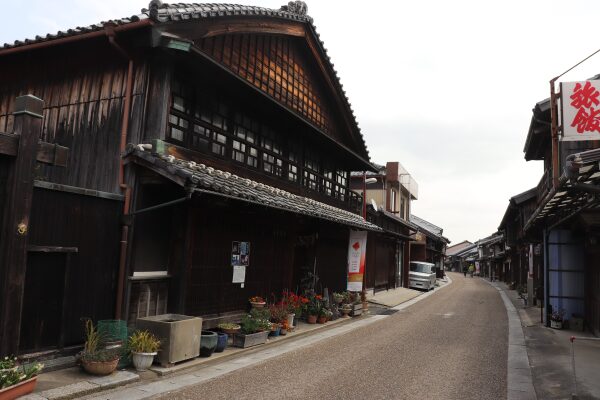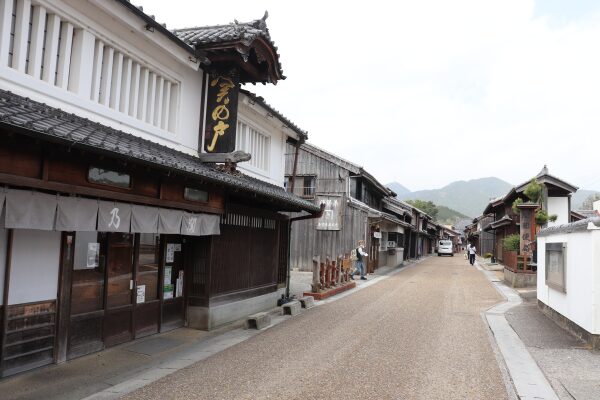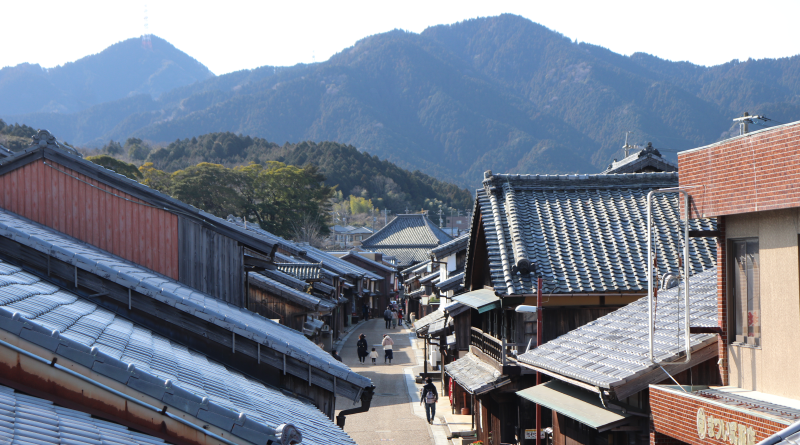Sekijuku, The Tokaido’s Historic Post Town
Tokaido, renowned as the most famous kaido in Japan, offers a glimpse into the country’s rich history. While many parts of the Tokaido have transformed over time, Sekijuku stands as an exception. Located near the border of Mie and Shiga Prefectures, Sekijuku preserves a charming historic townscape that vividly reflects the past.
Sekijuku
Sekijuku is the 47th post town on the Tokaido. It is about a 10-minute walk from the JR Seki Station on the Kansai Line.
Along with Arachi no Seki on Hokurikudo and Fuwa no Seki on Nakasendo, Suzuka no Seki on Tokaido was an important barrier in ancient times. It later became known as a post town, Sekijuku.
Sekijuku extends 1.8 km from west to east, featuring historic streetscapes along both sides of the road. This is the only place on the Tokaido that still preserves its historic atmosphere.


A Glimpse into the Past
There are more than 200 historic buildings along Tokaido in Sekijuku, some of them dating back to as old as Edo period. In old times, there were more than 6oo houses with 2 honjin and 2 waki-honjin.
Upon entering from the west is an intersection with Isebetsu Kaido that connects Sekijuku to Ise via Tsu. People visiting Ise passed through here often.
Sekijuku maintains its beautiful scenery, but because it is quite far from the main area of Mie such as Tsu and Yokkaichi, there are not many people here, nor are there so many souvenir shops or other tourist-oriented places. Rather, it is a quiet, rural town where local residents live in their daily lives.




Every year in late July, the Sekijuku Gion festival is held here. Although the number of floats has decreased, they continue to be pulled along this narrow street of Tokaido.

Museums
It is unfortunate that most of the houses in Sekijuku are not open to the public, as they are still homes to families even today. However, two museums welcome visitors: the Machinami Museum and the Tamaya Historical Museum.
The Machinami Museum showcases historic residential houses along the Tokaido. The Tamaya Historical Museum– once a famous hostel for travelers, allows visitors to see how the hotel looked in ancient times.
Neither building appears very large from the outside, a typical characteristic of historic Japanese houses. Similar to those in Kyoto, these buildings tend to be quite long to maximize the space facing the main street. Once you enter, you realize that the interiors are quite spacious.
Of course, we visited both museums and found them very satisfying.




The Unique Architecture of Sekijuku
This is a great spot for those who enjoy walking Kaido, especially because there is no steep inclining and much less traffic.
Also, if you like Kaido, you cannot help but notice all the architecture of old houses. They all are unique with each house having its charms throughout the houses.




Sekijuku’s Aizuya and Seki Jizo-in
After a pleasant 30-minute walk, we finally arrived at the east end of Sekijuku, where Aizuya is located. Once a hostel, Aizuya is now a popular restaurant and is also known for the old story of Koman of Seki, which tells the tale of a rare woman samurai who sought revenge for her father. It is said that Koman grew up in Aizuya.
I suspect that Sekijuku has many other stories, as it was once a passageway for numerous travelers in the past. In front of Aizuya stands Seki Jizo-in, which is likely the largest temple in Sekijuku.

At the eastern end, the Tokaido road diverges from the Yamato Kaido, which leads toward Nara. Tokaido continues over the Suzuka Mountains via the Suzuka Pass and then proceeds to Tsuchiyama in Shiga Prefecture. Once you cross the Suzuka Pass, Kyoto is just a short distance away!
Strolling through its streets, visitors can admire the traditional architecture and experience the ambiance of the Edo period, making it a unique and nostalgic journey along this iconic route.


Leave a Reply